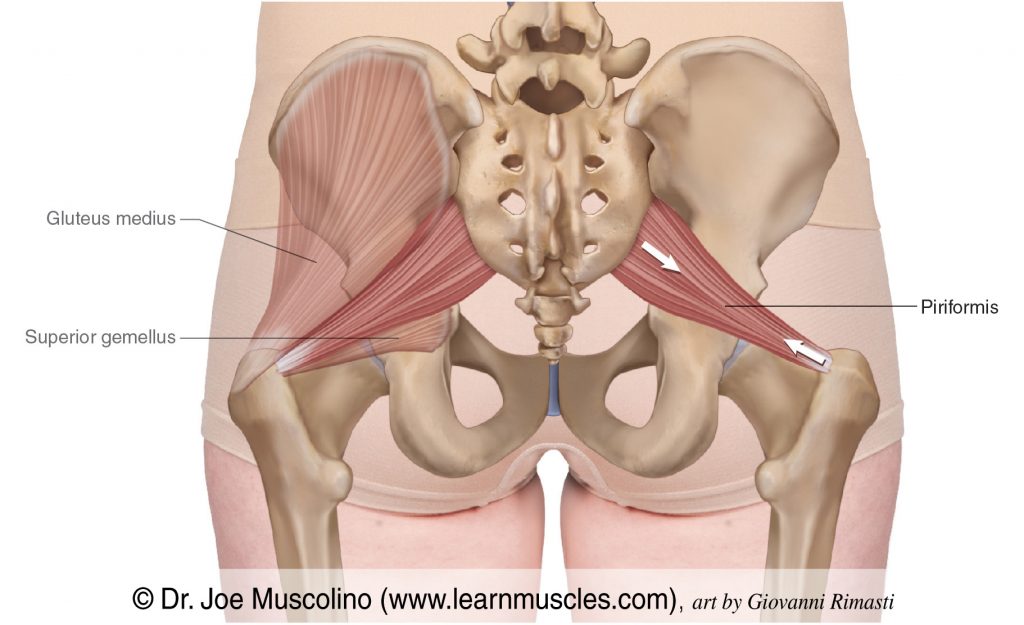- Click here for access to the full Anatomy Glossary.
- Right click on the image for a downloadable file of this muscle.
- Use of this artwork requires proper credit to be given (Permission: Dr. Joe Muscolino. www.learnmuscles.com – art work Giovanni Rimasti)

The piriformis is one of the six muscles of the deep lateral rotator group. They are (from superior to inferior):
- Piriformis
- Superior gemellus
- Obturator internus
- Inferior gemellus
- Obturator externus (deep to quadratus femoris)
- Quadratus femoris
ATTACHMENTS:
- Anterior surface of the sacrum to the superior aspect of the greater trochanter of the femur.
ACTIONS:
- Laterally rotates the thigh at the hip joint (from anatomic position)
- Abducts the thigh at the hip joint (from anatomic position) (note: this action is relatively weak)
- Medially rotates the thigh at the hip joint (if the thigh is first flexed approximately 60 degrees or more)
- Horizontally abducts the thigh at the hip joint (if the thigh is flexed to 90 degrees)
- Contralaterally rotates the pelvis at the hip joint (reverse closed-chain joint action – from anatomic position)
NOTE:
- The sciatic nerve can be compressed by a tight piriformis, causing symptoms of sciatica. When this occurs, it is called piriformis syndrome.
- In anatomic position, the piriformis laterally rotates the thigh at the hip joint. If the thigh is first flexed at least 60 degrees or more, the line of pull of the piriformis moves to the other side of the axis of motion and the piriformis becomes a medial rotator of the thigh at the hip joint.
